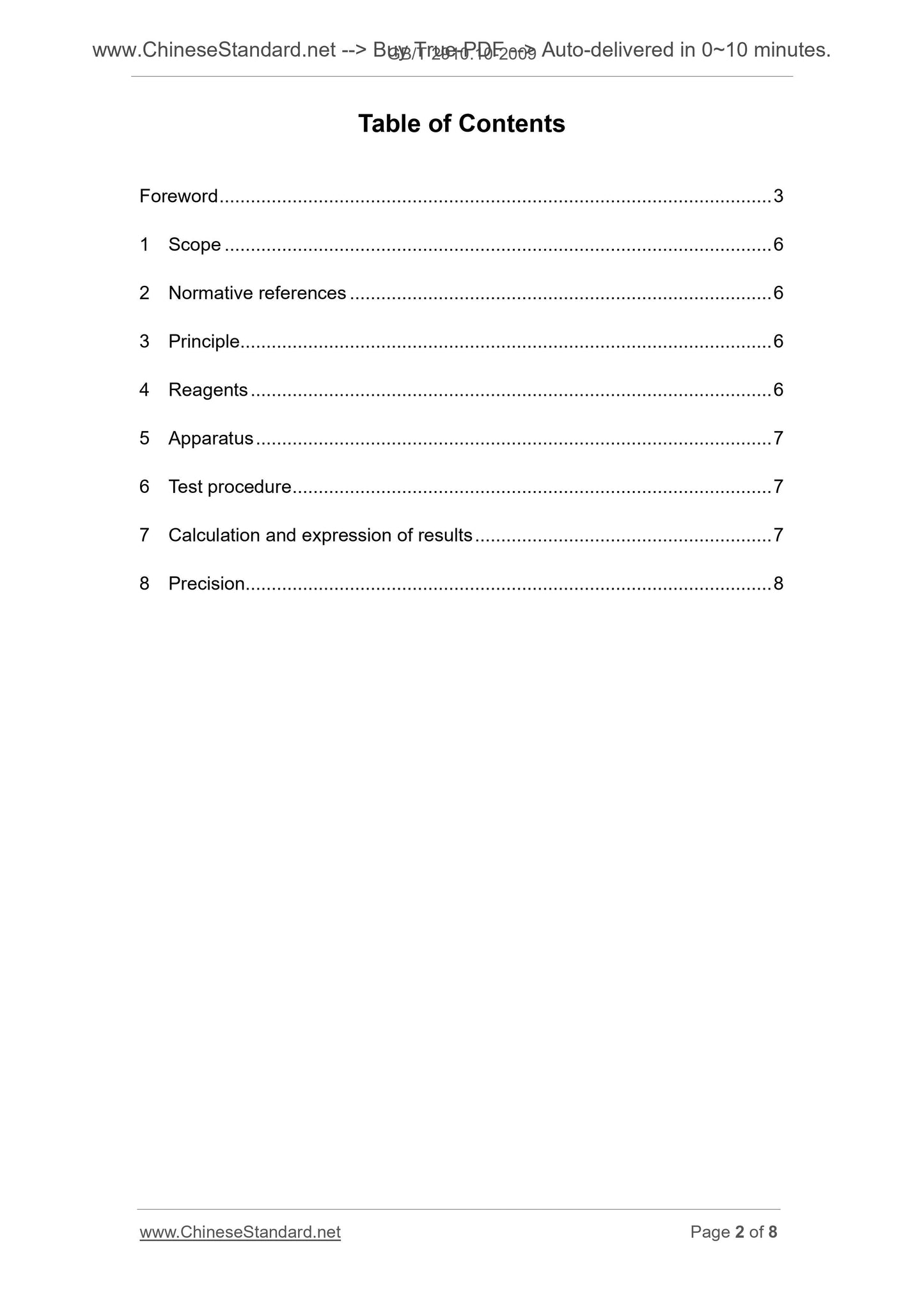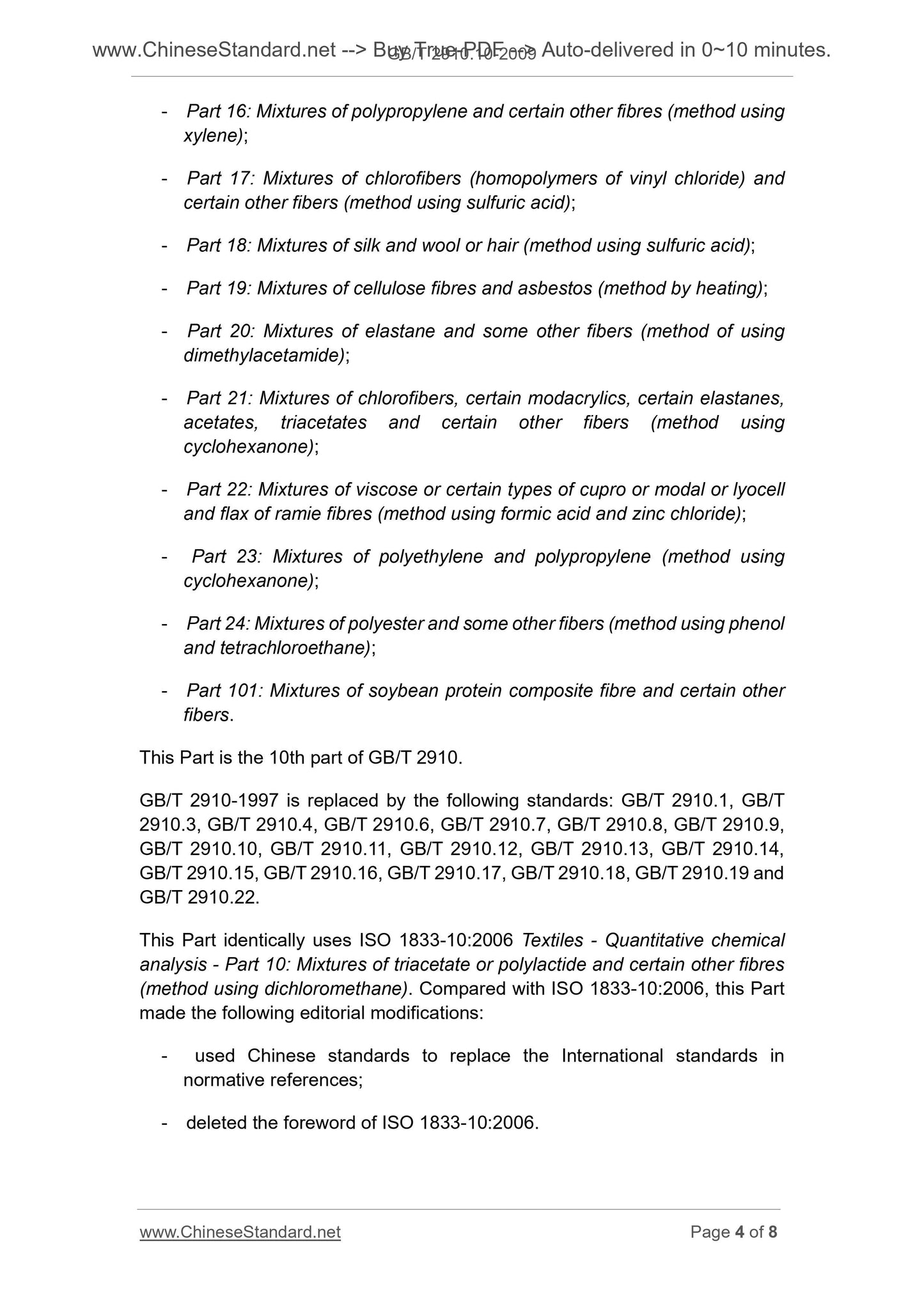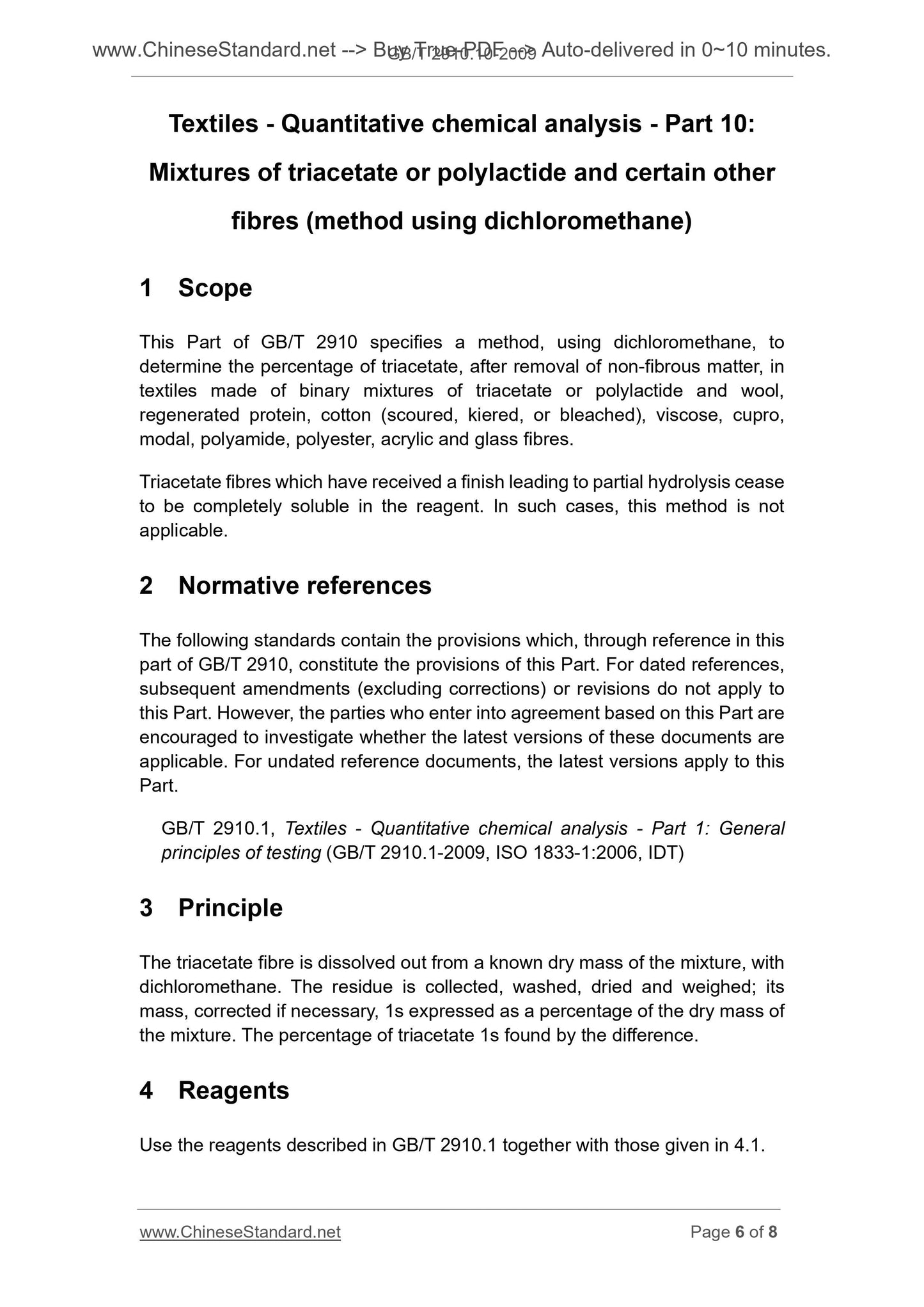1
/
of
4
www.ChineseStandard.us -- Field Test Asia Pte. Ltd.
GB/T 2910.10-2009 English PDF (GB/T2910.10-2009)
GB/T 2910.10-2009 English PDF (GB/T2910.10-2009)
Regular price
$70.00
Regular price
Sale price
$70.00
Unit price
/
per
Shipping calculated at checkout.
Couldn't load pickup availability
GB/T 2910.10-2009: Textiles -- Quantitative chemical analysis -- Part 10: Mixtures of triacetate or polylactide and certain other fibres (method using dichloromethane)
Delivery: 9 seconds. Download (and Email) true-PDF + Invoice.Get Quotation: Click GB/T 2910.10-2009 (Self-service in 1-minute)
Newer / historical versions: GB/T 2910.10-2009
Preview True-PDF
Scope
This Part of GB/T 2910 specifies a method, using dichloromethane, todetermine the percentage of triacetate, after removal of non-fibrous matter, in
textiles made of binary mixtures of triacetate or polylactide and wool,
regenerated protein, cotton (scoured, kiered, or bleached), viscose, cupro,
modal, polyamide, polyester, acrylic and glass fibres.
Triacetate fibres which have received a finish leading to partial hydrolysis cease
to be completely soluble in the reagent. In such cases, this method is not
applicable.
Basic Data
| Standard ID | GB/T 2910.10-2009 (GB/T2910.10-2009) |
| Description (Translated English) | Textiles -- Quantitative chemical analysis -- Part 10: Mixtures of triacetate or polylactide and certain other fibres (method using dichloromethane) |
| Sector / Industry | National Standard (Recommended) |
| Classification of Chinese Standard | W04 |
| Classification of International Standard | 59.080.01 |
| Word Count Estimation | 6,670 |
| Date of Issue | 2009-06-15 |
| Date of Implementation | 2010-01-01 |
| Older Standard (superseded by this standard) | GB/T 2910-1997 |
| Quoted Standard | GB/T 2910.1 |
| Adopted Standard | ISO 1833-10-2006, IDT |
| Regulation (derived from) | National Standard Approval Announcement 2009 No.8 (Total No.148) |
| Issuing agency(ies) | General Administration of Quality Supervision, Inspection and Quarantine of the People's Republic of China, Standardization Administration of the People's Republic of China |
| Summary | This standard specifies the determination to go unless two-component mixture of fiber after fiber material consisting of the following triacetate or polylactide fiber content method using dichloromethane law: triacetate or polylactide fibers, and-wool, regenerated protein fibers, cotton (raw cotton, bleached or dyed cotton, cotton), viscose fiber, copper ammonia fiber, modal fiber, poly Thalidomide fiber, polyester fibers, polyacrylonitrile fibers and glass fibers. After finishing a result of the partial hydrolysis of triacetate fibers, can not be completely dissolved in the reagent, the method is not applicable. |
Share







